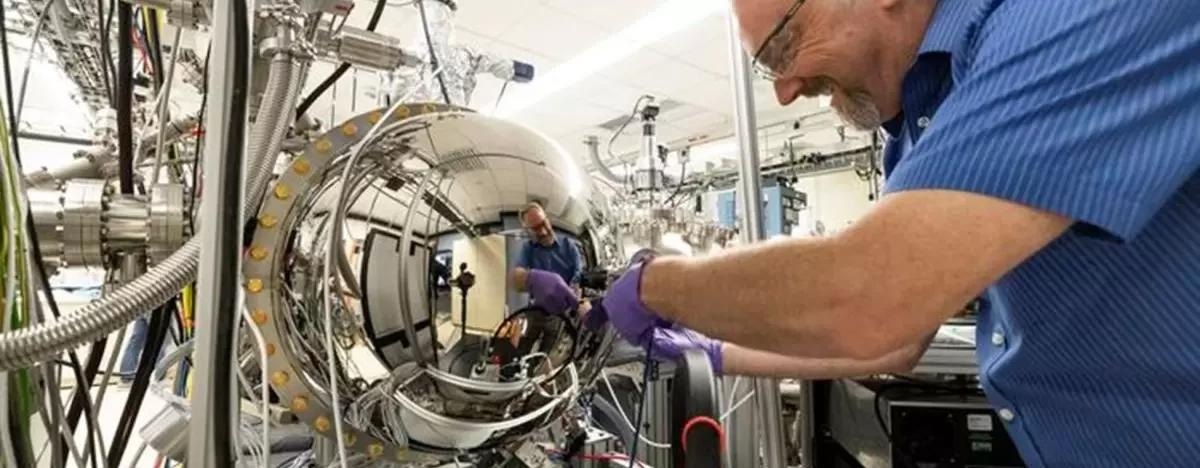Reviewed by Danielle Ellis, B.Sc.Nov 9 2023
Quantum computers use quantum bits, or qubits, which are based on fragile, short-lived quantum mechanical states, to process information. Researchers from the Department of Energy’s Oak Ridge National Laboratory sought to develop a novel material system to strengthen qubits and customize them for applications.
 Materials scientist Robert Moore probes the interface between a topological insulator and a superconductor. Image Credit: Carlos Jones/ORNL, US Dept. of Energy
Materials scientist Robert Moore probes the interface between a topological insulator and a superconductor. Image Credit: Carlos Jones/ORNL, US Dept. of Energy
We are pursuing a new route to create quantum computers using novel materials.
Robert Moore, Study Co-Lead Author and Materials Scientist, Oak Ridge National Laboratory
The research was published in Advanced Materials with ORNL colleague and materials scientist Matthew Brahlek. The work was partially funded by the US National Science Foundation.
The researchers combined a superconductor, which has no electrical resistance, with a topological insulator, which has electrically conducted surfaces but an insulating interior. As a result, a sharp interface forms between crystalline thin films with distinct atomic symmetry configurations.
The researchers’ novel interface may lead to exotic new physics and host a unique quantum-building component with potential as a superior qubit.
Moore added, “The idea is to make qubits with materials that have more robust quantum mechanical properties. What is important is that we have learned how to control the electronic structure of the topological insulator and the superconductor independently so we can tailor the electronic structure at that interface.”
There are still obstacles to overcome.
“We need to improve and better understand the materials at the atomic level. We now know how to control the materials at the level required to make that happen,” Moore concluded.
Journal Reference:
Moore, R. G., et al. (2023) Monolayer Superconductivity and Tunable Topological Electronic Structure at the Fe(Te,Se)/Bi2Te3 Interface. Advanced Materials. doi:10.1002/adma.202210940